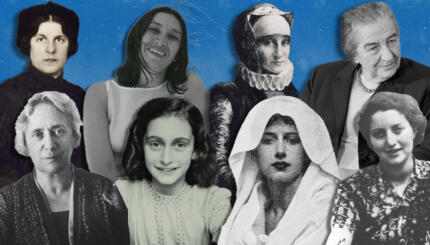“Question authority!” was the mantra of my peer group when I was coming of age in the late ’60s. How that jibed with my evolving commitment to Orthodoxy was not something I questioned at first. I knew that Torah was the source of religious authority, because it came from God, and rabbis were the designated interpreters of Torah. The ordinary Jew could decide which rabbi or rabbis to turn to, and the ones I encountered were mostly modern, liberal, and pretty much on the same page as I was. Asking for a p’sak, a halakhic decision in response to a question, felt more like a consultation than an imposition of authority.
Fast forward four decades or so, and I have become more attuned to, and troubled by, the underlying tension between those two perspectives. As a member of a local Orthodox community and as a parent, I have come to appreciate the value of exogenous standards. But I have sometimes chafed at the imposition of decisions I considered wrong or given by those who didn’t have to deal with the consequences. For example, why should male rabbis define what is beged isha, women’s clothing, when women today wear pants as a standard item of clothing? And discovering that some rabbis have feet of clay has understandably shaken my willingness to outsource my own thinking about ethical dilemmas.
The conflict between accepting rabbinic authority from above and following a more democratic model is one of the central tensions of Jewish modernity. The latest issue of the JOFA Journal examines this conflict and finds in it both “opportunities and challenges.”
Several contributors to this issue explore the meaning and process of p’sak in an age when lay people — both male and female — are knowledgeable and can easily access information and opinions from the Internet or directly from the halakhic sources, and come to their own decisions. Seeking a p’sak, then, is less about information gathering and more about building a relationship and seeking individualized guidance. And thanks to the creation of institutions of higher halakhic learning open to women, their graduates are now often fully engaged in the give-and-take of halakhic discussion and decision-making. .
When I was privileged to attend the third ordination ceremony of Yeshivat Maharat a few weeks ago, I was greatly heartened to see a new cadre of women leaders emerging to serve Jewish communities in Europe, Israel, and North America. These graduates will be serving not only as teachers and chaplains, but also as poskot, halakhic decisors. As Rabbi Dov Linzer states in an article in the latest JOFA Journal, “…without women in the role of poskot, halakha suffers. … [W]e need to have women’s voices as a regular and ongoing part of the discourse and process of p’sak.”
Women will bring their experiences — of sitting behind a mechitza, of preparing for mikveh, of raising children — to the process of giving p’sak. How will p’sak be different, I asked myself, for their participating in the conversation?
In the wake of recent revelations of misconduct by some rabbis, there is reason to think that the top-down model of rabbi-congregant relationship may lead to hubris and to misuse of rabbinic authority. Women, who tend to be collaborative in their leadership styles, may offer an alternative way of giving p’sak while still preserving the authority of the textual tradition.
Does that mean that there won’t be any “bad eggs” in the lot when women are part of the authority structure? I cannot predict the future, but would like to come back in fifty years to see what the process and content of p’sak will look like when women are fully part of the conversation.
Read the latest issue of the JOFA Journal online here.
Visit our website to access past issues of the JOFA Journal.
Torah
Pronunced: TORE-uh, Origin: Hebrew, the Five Books of Moses.



